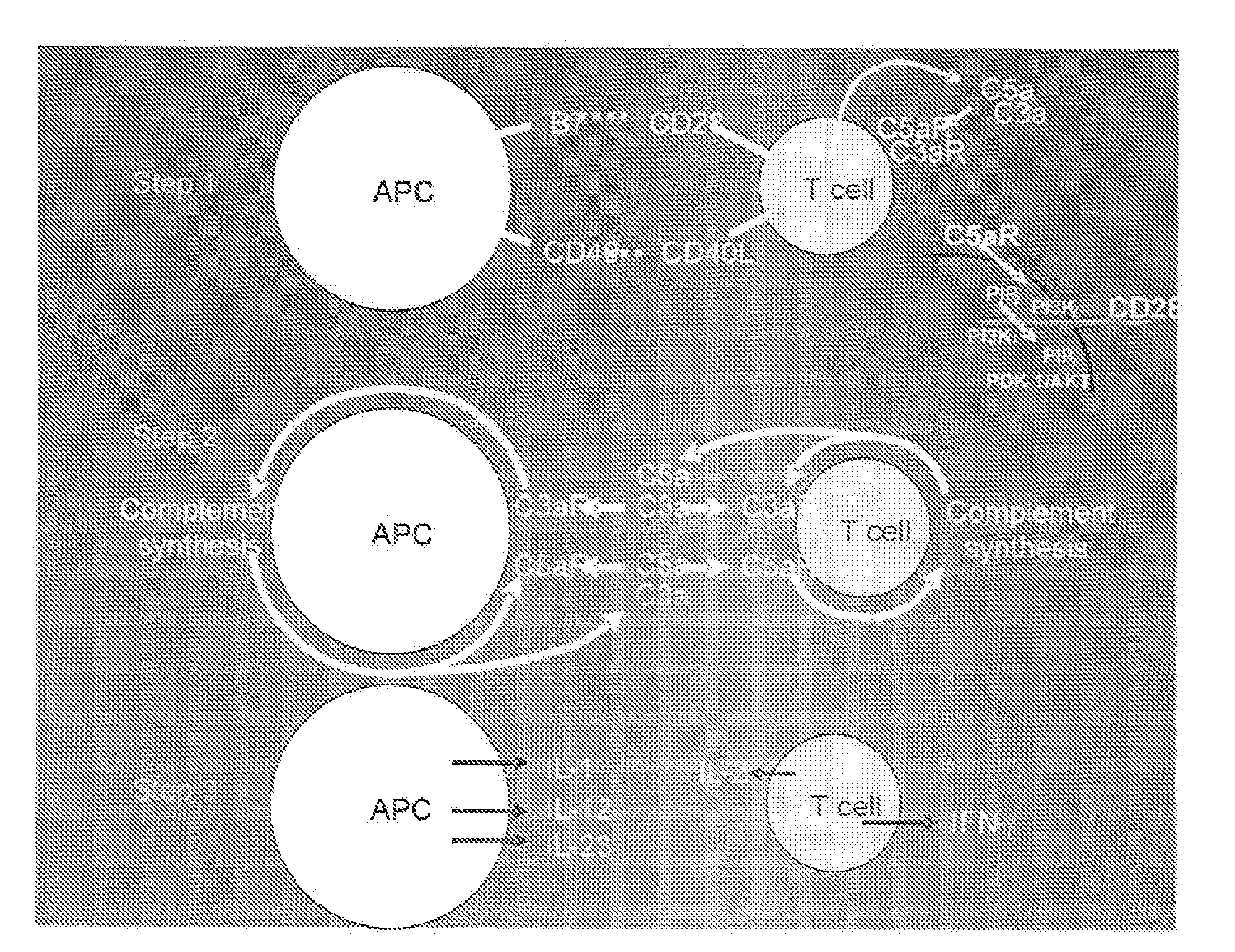Method of treating t cell mediated disorders
a t-cell and disorder technology, applied in the field of t-cell mediated disorders, can solve the problems of increasing severe corneal scarring in patients, etc., and achieves the effect of reducing or substantially inhibiting interaction, reducing t-cell inflammatory cytokine expression, and reducing the risk of future episodes of the diseas
- Summary
- Abstract
- Description
- Claims
- Application Information
AI Technical Summary
Benefits of technology
Problems solved by technology
Method used
Image
Examples
example 1
[0108]We initiated studies to determine whether C5a and / or another activation fragment i.e., C3a, generated from complement endogenously produced by cognate APC-T cell partners, participate(s) in T cell differentiation into IFNγ+ effector cells. C5a and C3a are ˜10 kDa anaphylatoxins able to ligate the C5a receptor (C5aR) and the C3a receptor (C3aR) that are G protein-coupled receptors (GPCRs) generally expressed on APCs and reported under some conditions to be detectable on T cells (Soruri et al., 2003). We performed studies with primary APCs and T cells by using two independent approaches, genetic deficiency and pharmacological blockade, to assess whether and, if so, how the local complement production relates to physiological T cell responses. After finding that these GPCR engagements indeed are integrally involved in the T cell activation process physiologically, we investigated the mechanism and unexpectedly found that their signaling not only functions integrally in costimulat...
example 2
[0146]We examined the role of the complement system in host immune and inflammatory responses that occur in the cornea in herpes simplex stromal keratitis (HSK).
Materials and Methods
[0147]Mice & Infection
[0148]Male and Female wild-type (WT), C3− / −, C3aR− / −, C5aR− / −, and DAF− / − Balb / c at 6-8 weeks of age were used in these experiments. The cornea of the right eye of the mice were scarified with 27-gauge needle in a crisscross pattern. 1×106 PFU of the KOS strain of HSV type 1 applied topically. The KOS strain has been shown in prior studies to induce HSK within 1-week post infection. The mice were sacrificed day 14 after infection and sent for routine histology.
HSK scoring
[0149]Mice were examined at days 1, 3, 9, and 14 post-infection and scored as follows:[0150]0: normal cornea[0151]1+: opacity, edema, and neovascularization in less than 25% of the cornea[0152]2+: opacity, edema, and neovascularization in 25% to 50% of the cornea;[0153]3+: opacity, edema, and neovascularization in 5...
PUM
 Login to View More
Login to View More Abstract
Description
Claims
Application Information
 Login to View More
Login to View More - R&D
- Intellectual Property
- Life Sciences
- Materials
- Tech Scout
- Unparalleled Data Quality
- Higher Quality Content
- 60% Fewer Hallucinations
Browse by: Latest US Patents, China's latest patents, Technical Efficacy Thesaurus, Application Domain, Technology Topic, Popular Technical Reports.
© 2025 PatSnap. All rights reserved.Legal|Privacy policy|Modern Slavery Act Transparency Statement|Sitemap|About US| Contact US: help@patsnap.com



